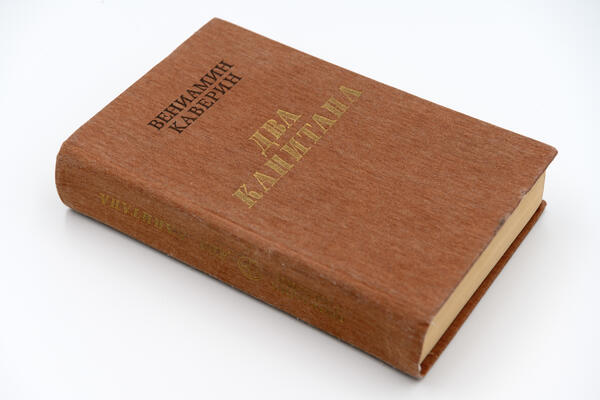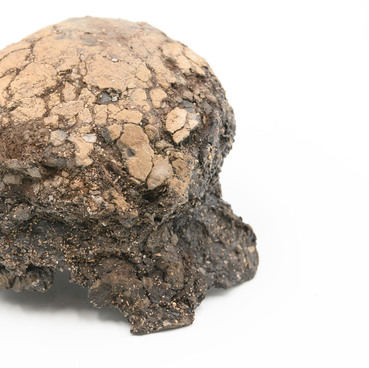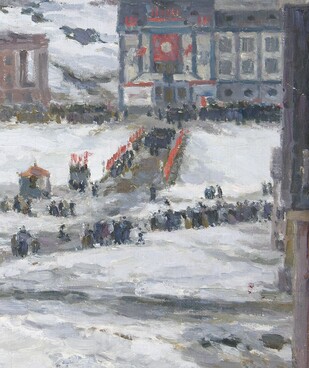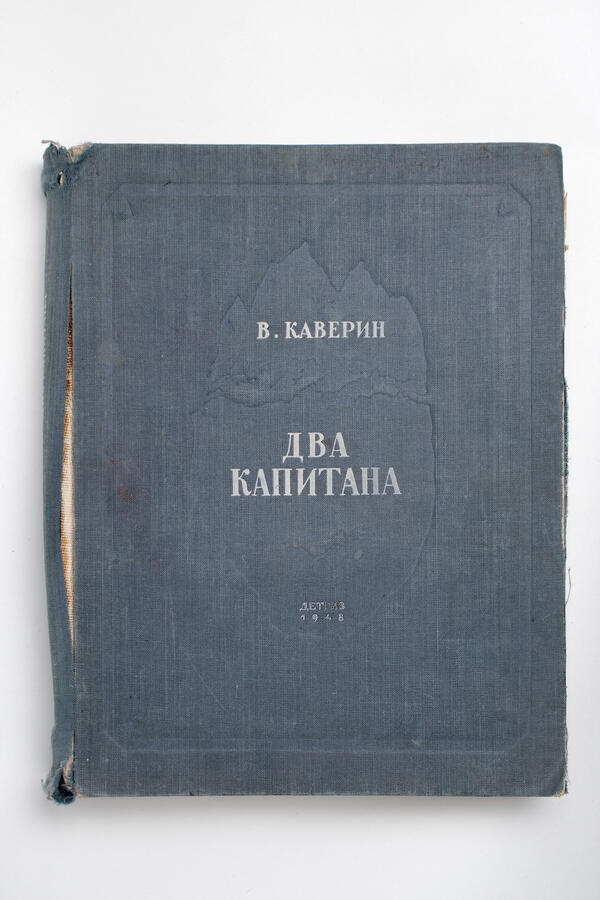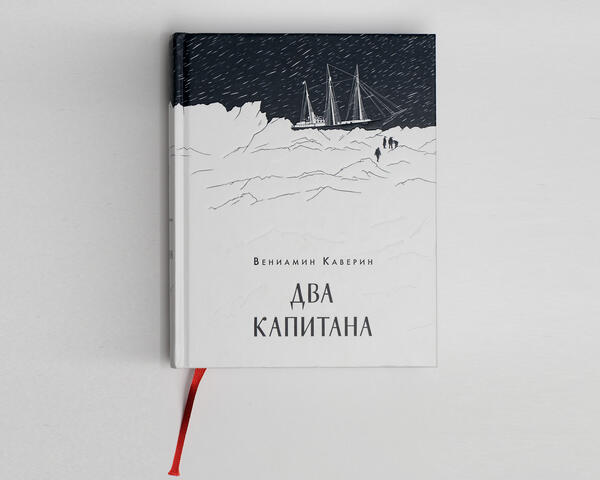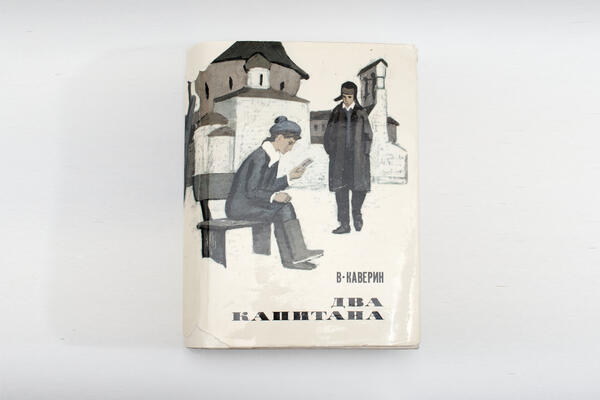The exhibition of the Polyarny Museum of History and Local Lore presents “The Two Captains”, the famous book by Veniamin Alexandrovich Kaverin.
In 1943, Kaverin began writing the second volume of the novel “The Two Captains”, in which part of the action takes place in the Northern Fleet. The writer deliberately went to the Kola Peninsula as a war correspondent for the Izvestia newspaper. Kaverin initially believed that writing a novel during an ongoing war was quite inappropriate, but he “went to the Far North not without secretly hoping to collect material for the second volume.” It was in the Kola region of the Arctic, along with writing articles (for almost every issue of the newspaper), stories and essays for the newspaper, that he began work on some of the chapters of his most famous work.
Kaverin reflected on his very first impression of the city through the main character: “Our launch entered the bay, and the town unfolded to my gaze, all white, pink and snowy. It stood on the steep, gray hillside as if on a pedestal of beautiful granite rocks. White little houses with porch steps running out in different directions were arranged in terraces, while along the bay front, forming a semi-circle, stood big stone houses. In fact, as I found out afterwards, they were called ‘compass houses’, as though a gigantic compass had described this semi-circle over Ekaterininskaya Harbor.”
The novel takes place in two garrisons of the Severomorsk front. N. — the base of naval pilots, where Captain Grigoriev was assigned is the village of Vayenga which in 1951 became the city of Severomorsk — the capital of the Northern Fleet. Polyarny was the cradle of the Northern Fleet and its main naval base during the Great Patriotic War. During his time in the North, the writer lived exactly in Polyarny.
Veniamin Kaverin masterfully
introduces the daily life of the frontline northern garrisons through the
novel’s narrative. He notes the amazing contrast “to fly after a fight over the
sea on a plane full of holes with the battle still echoing through the body
that is giving in to the cold, only to appear two hours later in the
brightly-lit, fashionable chambers of the officers’ club, drink wine and
chatter away about nonsense.” In the novel, Kaverin mentions convoys that
ensure the delivery of weapons, ammunition and food to the USSR under
Lend-Lease Act, the peculiarities of the combat service of pilots, submariners
and the military life of the defenders of the Arctic.

